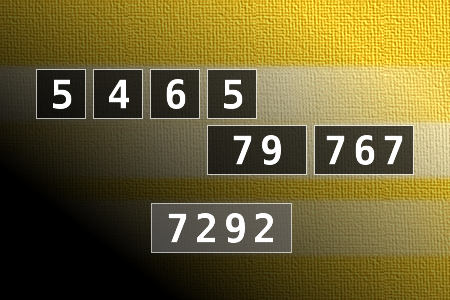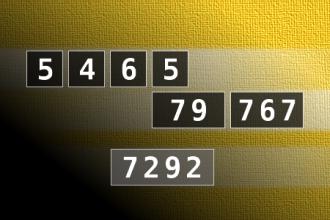Calculate the number 7292
NUMBERMANIA: Calculate the number 7292 using numbers [5, 4, 6, 5, 79, 767] and basic arithmetic operations (+, -, *, /). Each of the numbers can be used only once.Correct answers: 28
The first user who solved this task is Linda Tate Young.
#brainteasers #math #numbermania

Jimmie, an 80-year-old gentlem...
Jimmie, an 80-year-old gentleman, retired to Florida after his wife of 58 years had passed away. He was quite alone in the world and longed for companionship. One day, as he was walking through a public park, he spied what he considered to be a very pretty silver-haired lady sitting alone on a park bench. Getting his nerve up, he approached the lady and asked graciously, "Pardon me, ma'am, but may I sit here with you."
The silver-haired Marcia looked up to see a distinguished looking white-haired gentleman and replied, "Why certainly," and scooted over gently to give him room to sit down.
For the next two hours the two sat and talked about everything. They discovered that they came from the same part of the country, liked the same big band music, voted for the same presidential candidates, had long happy marriages and lost their spouses in the last year, and in general agreed about almost everything.
Finally, the old gentleman cleared his throat and asked sheepishly, "Ma' am, may I ask you two questions?"
With great anticipation Marcia replied, "Why certainly!"
The old gentleman removed a handkerchief from his coat pocket and spread it out on the ground before her. He very gingerly got down on one knee and looked her softly in the eyes.
"Marcia, I know we've only known each other for a couple of hours, but we have so much in common. I feel I have known you all my life. Will you marry me and be my wife?"
Marcia grabbed at Jimmie's hands and said, "Why, yes, I will marry you! You have made me so very happy!"
She reached over and kissed him gently on the cheek. Then Marcia said, "You said you had two questions to ask me. What is the second question?"
Jimmie scratched his neck and said, "Will you help me get up?"
The silver-haired Marcia looked up to see a distinguished looking white-haired gentleman and replied, "Why certainly," and scooted over gently to give him room to sit down.
For the next two hours the two sat and talked about everything. They discovered that they came from the same part of the country, liked the same big band music, voted for the same presidential candidates, had long happy marriages and lost their spouses in the last year, and in general agreed about almost everything.
Finally, the old gentleman cleared his throat and asked sheepishly, "Ma' am, may I ask you two questions?"
With great anticipation Marcia replied, "Why certainly!"
The old gentleman removed a handkerchief from his coat pocket and spread it out on the ground before her. He very gingerly got down on one knee and looked her softly in the eyes.
"Marcia, I know we've only known each other for a couple of hours, but we have so much in common. I feel I have known you all my life. Will you marry me and be my wife?"
Marcia grabbed at Jimmie's hands and said, "Why, yes, I will marry you! You have made me so very happy!"
She reached over and kissed him gently on the cheek. Then Marcia said, "You said you had two questions to ask me. What is the second question?"
Jimmie scratched his neck and said, "Will you help me get up?"

